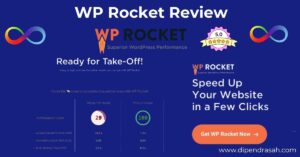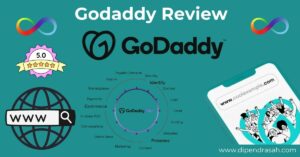Backlinks are basically votes from other websites telling search engines your content is worth checking out. Picture them as digital word-of-mouth recommendations. They’re crucial because search engines like Google see these votes as a signal that your content is trustworthy and valuable.
Not all backlinks are created equal. High-quality backlinks come from respected, authoritative websites. Think of these as gold stars from teachers. They can significantly boost your search engine rankings. On the flip side, low-quality backlinks, like those from spammy sites, can hurt more than they help.
The better the backlinks pointing to your site, the higher you’ll likely rank in search engine results. This is because search engines want to provide users with the best possible content, and backlinks from reputable sites are a good indicator that your content fits the bill. Understanding this helps you focus your efforts where they matter most: getting high-quality backlinks from credible sources.
Conducting a Backlink Audit: Knowing Where You Stand
Before you start chasing after new backlinks, it’s smart to assess what you already have. A backlink audit is kind of like a health check-up for your website. By taking stock of your current backlinks, you can spot the good, the bad, and the ugly.
Using tools like Ahrefs, SEMrush, or Moz, you can get a detailed picture of who’s linking to your site. These tools provide insights into each backlink’s quality and relevance. Focus on links coming from reputable websites with high domain authority. These are your keepers.
Toxic backlinks, on the other hand, need attention. These are links from spammy or low-quality sites that could hurt your credibility. Most SEO tools will flag these for you. Once identified, you can work on removing them. Sometimes, this involves reaching out to website owners and requesting link removal. Other times, you’ll need to disavow them using Google’s Disavow Tool.
Assessing the quality of your existing backlinks helps you understand your starting point and see where you need to improve. Look at metrics like domain authority, page authority, and relevance to your niche. This will give you a clear idea of which links are benefiting you and which ones might be dragging you down.
Creating High-Quality Content: The Core of Natural Backlink Acquisition
High-quality content is the heartbeat of your backlink strategy. Great content makes people want to link to you naturally. You can’t fake it; exceptional content is crafted with care, research, and creativity.
Start with well-researched and authoritative articles. Offer fresh insights or information that isn’t just rehashed from other sources. If you come across as an expert, other sites will want to reference your work. Use trustworthy sources, double-check your facts, and aim to be the go-to resource in your niche.
Data, studies, and original research add an extra layer of authority. When you present unique data or insights, it becomes highly shareable and link-worthy. People love to cite original research in their own content. Conduct surveys, run experiments, or compile statistics that can give your audience something valuable and unique.
Multimedia elements like videos, infographics, and podcasts can set your content apart. They’re engaging and highly shareable. An infographic summarizing your article can get you more shares and backlinks. Videos that break down complex topics in digestible formats can attract links from readers who find them useful and easy to understand.
Incorporate these elements into your content regularly, and you’ll naturally attract high-quality backlinks. When your content stands out, people will want to link to it, share it, and recommend it to others. It’s not just about writing more but writing better and smarter.
Leveraging Guest Blogging: Building Relationships and Earning Backlinks
Guest blogging is one of the most effective ways to build backlinks while expanding your reach. It’s like networking on steroids. However, the key lies in choosing the right platforms and creating content that adds value.
First, identify websites that align with your niche and have high domain authority. Tools like Ahrefs or Moz can help you find these. Look for sites that accept guest posts and have a strong readership. The more reputable the site, the better the backlink.
Next, crafting a compelling pitch is crucial. Personalize your emails and show that you’ve done your homework. Mention specific posts you enjoyed and explain how your proposed content will benefit their audience. A catchy subject line never hurts, either.
When writing your guest post, focus on providing valuable insights and actionable advice. Avoid being overly promotional about your own site. Instead, weave your expertise naturally into the content. High-quality guest posts don’t just bring backlinks; they position you as an authority in your field.
Guest blogging also opens doors for long-term relationships. Once you’ve contributed valuable content, maintaining that connection can lead to future collaborations. A solid relationship with a reputable site is a gift that keeps on giving.
Utilizing Social Media: Driving Engagement and Link Building
Social media platforms are gold mines for getting your content in front of a wider audience and scoring backlinks. Sharing your content across various social channels can lead to more eyes on your work. More visibility means more chances of getting those precious backlinks.
Start by sharing your articles, videos, infographics, and other valuable content on platforms such as Facebook, Twitter, LinkedIn, and Instagram. Tailor your posts to suit the style and audience of each platform. A well-crafted caption and an eye-catching image can make all the difference.
Engage with influencers and communities in your niche. Comment on their posts, share their content, and make meaningful interactions. Building relationships with influencers can lead to them sharing your content, which can earn you high-quality backlinks.
Tracking social media metrics is essential to understand what’s working and what’s not. Pay attention to metrics like shares, likes, comments, and click-through rates. Use this data to optimize your strategy and focus on what drives the most engagement and backlinks.
Forming Strategic Partnerships: Collaborating for Mutual Benefit
Building strategic partnerships isn’t just about swapping links. It’s about creating win-win scenarios where both parties benefit from the collaboration.
First, identify potential partners in your industry. These could be bloggers, businesses, or influencers whose content and audience align with yours. Tools like BuzzSumo or Google Alerts can help you find these partners.
Once you have a list of potential partners, reach out with personalized messages. Show them how a partnership can benefit both of you. This could be through content collaborations, joint webinars, or even exclusive offers for each other’s audiences.
Create high-quality, valuable content together. Co-authoring articles, creating joint videos, or hosting webinars can provide tremendous value to your audiences and result in natural backlinks. Both parties share the content, increasing its reach and the likelihood of backlinks.
Maintaining ongoing relationships is crucial. Once you’ve partnered with someone, keep the communication open. Regular check-ins and continuous collaboration can lead to more backlink opportunities in the future.
By forming strategic partnerships and focusing on mutual benefits, you not only gain high-quality backlinks but also expand your network and audience reach. It’s a win-win all around.
Leveraging Online Directories and Forums: Targeted Backlinking
Online directories and forums can be a goldmine for targeted backlinking. But, not all directories or forums are created equal. Focus on reputable directories that are well-regarded in your industry.
Start by listing your business in high-quality online directories. These directories often have good domain authority, and a link from them can boost your credibility. Make sure all your business information is accurate and up-to-date. Consistency across all listings is key.
Next, dive into industry-specific forums and Q&A sites like Reddit, Quora, or niche-specific forums. Participate actively by providing helpful, valuable answers to questions related to your expertise. Include a link to your relevant content where it naturally fits. This isn’t about spamming links but adding genuine value to the conversation.
Providing consistent value in these communities can help you earn trust and establish yourself as an authority. Over time, other users may start linking to your content naturally because they recognize your expertise.
While it can be time-consuming, the effort you put into engaging with these communities can yield high-quality backlinks tailored to your niche.
Utilizing PR Tactics: Gaining Exposure and High-Quality Links
PR tactics can be a powerful tool for boosting your backlink profile. By gaining media exposure, you not only increase your brand’s visibility but also attract high-quality backlinks from reputable sites.
Writing press releases for significant events like product launches, company milestones, or industry awards can grab the attention of journalists and influencers. Make sure your press releases are well-written and newsworthy. This increases the chances of them being picked up by media outlets.
Building relationships with journalists and industry publications can pay off big time. Take the time to research who covers your industry and what kind of stories they are interested in. Personalize your pitches to show that you understand their work and how your story fits in.
Responding to media queries can also earn you valuable backlinks. Websites like HARO (Help A Reporter Out) connect journalists with experts. By providing insightful quotes or information, you can get featured in articles, gaining authoritative backlinks in the process.
Using these PR tactics helps you gain media coverage and earn high-quality backlinks. The key is to be consistent and genuine in your efforts. Over time, this strategy can significantly enhance your backlink profile and overall SEO.
Monitoring and Adapting Your Backlink Strategy: Continuous Improvement
Once you’ve put your backlink strategy into action, the work doesn’t stop. Regularly monitoring your backlinks is crucial to maintaining their quality and effectiveness.
Use SEO tools like Google Analytics, Ahrefs, or SEMrush to keep track of your backlinks. These tools help you see where your backlinks are coming from, their quality, and their impact on your SEO.
Evaluate the performance of your backlinks by looking at metrics like domain authority, referral traffic, and changes in search rankings. This data can highlight what’s working and what’s not, allowing you to adjust your strategy accordingly.
Stay informed about the latest SEO trends and algorithm updates. Search engines constantly evolve, and your backlink strategy should too. What worked last year might not be as effective now, so staying updated ensures your tactics remain relevant.
Utilize analytics to identify new backlink opportunities. Look for patterns in your data to see which types of content attract the most backlinks and from where. This insight can guide future content creation and link-building efforts.
Adapting your strategy based on ongoing performance and industry changes is the key to long-term success in SEO. Constant improvement ensures that your backlink profile remains strong and beneficial to your overall SEO goals.



